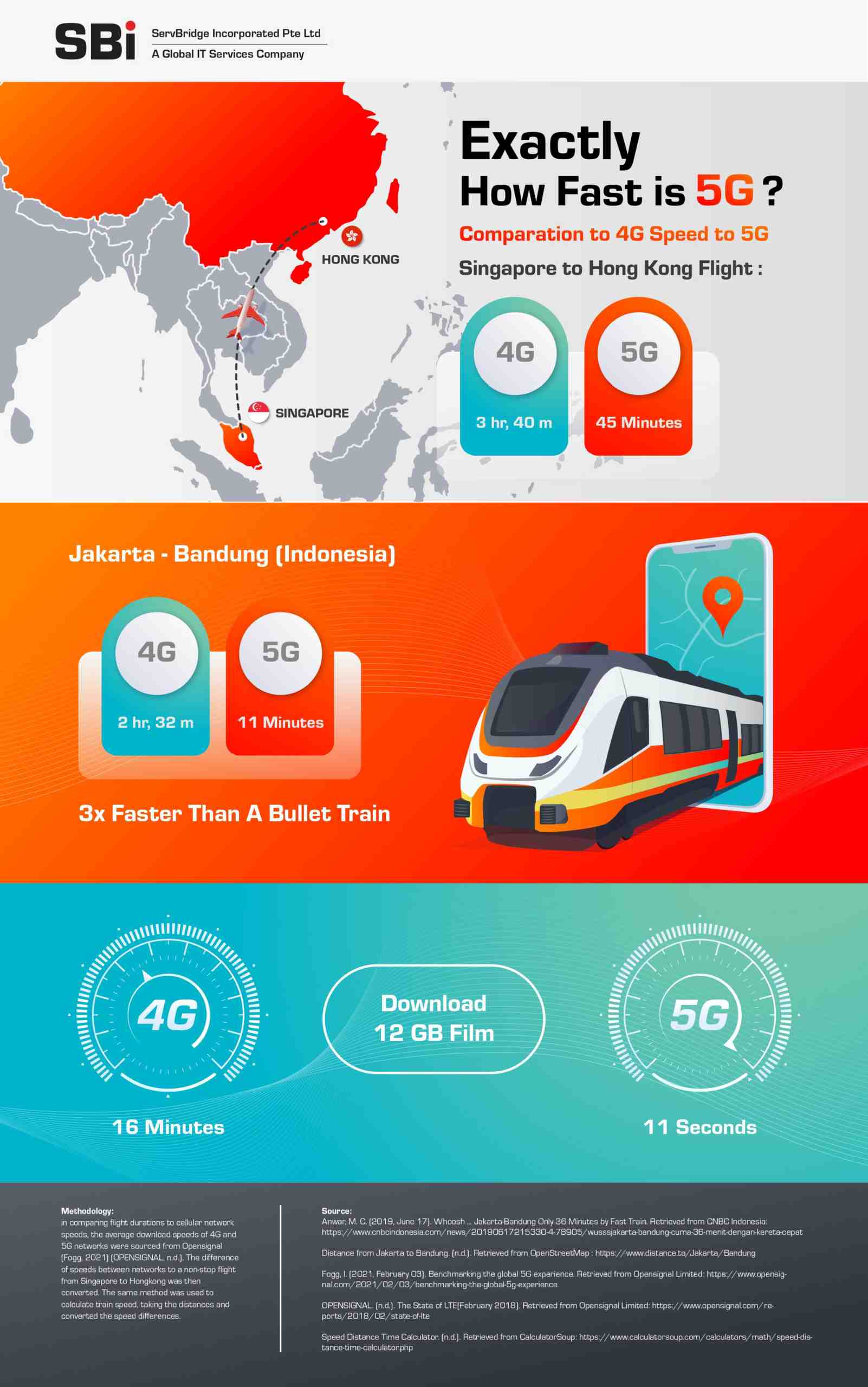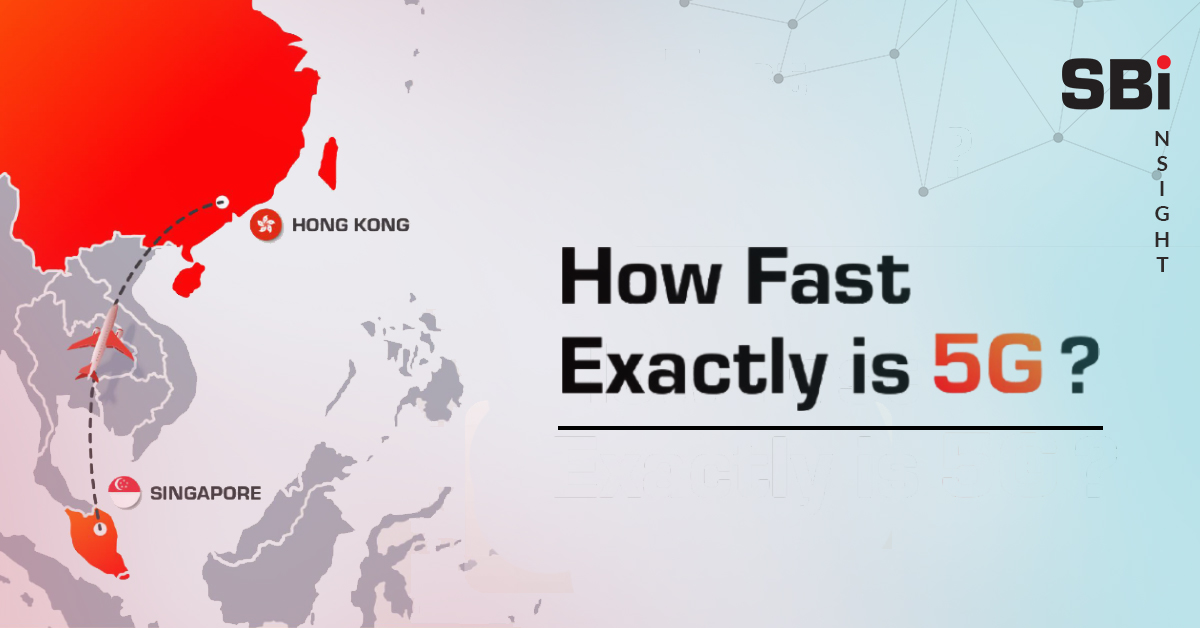The topic about “5G” has been around for a few years now and only recently has the super-fast wireless network become a reality for us to use. Changing the way we live, work and play.
Said to be faster and more capable in handling connected devices than the existing 4G LTE network, enabling us to improve the already advanced technology which we have today. In addition, promising incredibly fast wireless communication for mobile devices and the ability to handle heavier loads of traffic.
Thus, leading us to wonder just how fast is the 5G network? With comparison of the two different networks, 4G and 5G, one would expect a 4 to 13 times speed bump which leads to a difference of about 200Mbps on average.
Since it is hard to visualise a concept like download speeds, how about we apply the speed improvements of 5G to something we are familiar with: long-haul flights and train trips.
For example, a direct flight from Singapore to Hong Kong would take around 3 hours 40 minutes worth of flight time. However, what if the advancement in mobile internet speeds were matched by the advancements in aviation, would there be any improvements with the flight time?
Another example; it takes 2 hours 32 minutes for a trip via train from Jakarta to Bandung, Indonesia. Imagine the amount of time saved if 5G technology was used to shorten the journey.
In a nutshell, the new 5G communication technology has an enormous potential in taking our existing technology to the next level, innovating and upgrading devices to better suit the ever-changing society that we live in. Imagine downloading High Definition (HD) films in a matter of seconds or billions of connected devices gathering and sharing information in real time to reduce road accidents and aid traffic control.
Methodology: in comparing flight durations to cellular network speeds, the average download speeds of 4G and 5G networks were sourced from OpenSignal (Fogg, 2021) (OPENSIGNAL, n.d.). The difference of speeds between networks to a non-stop flight from Singapore to Hongkong was then converted. The same method was used to calculate train speed, taking the distances and converted the speed differences.


Author
Nikki R Gunarso
Digital Marketing Specialist

Author
Nikki R Gunarso
Digital Marketing Specialist
Follow us on Linkedin

